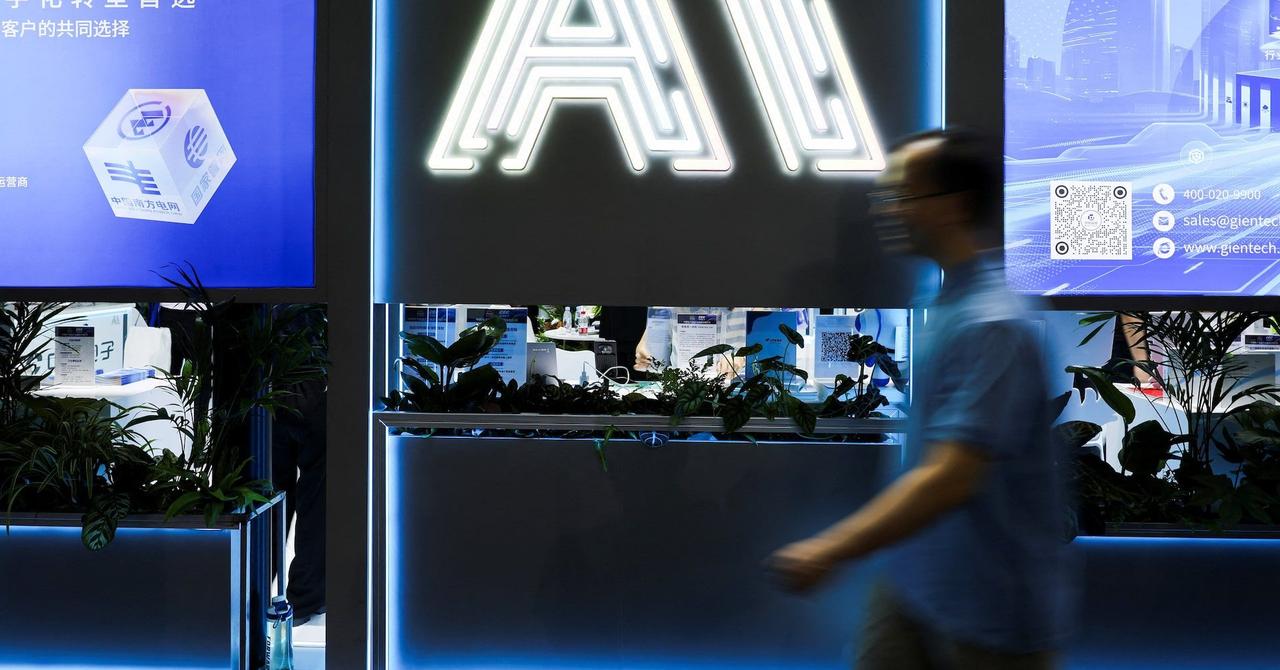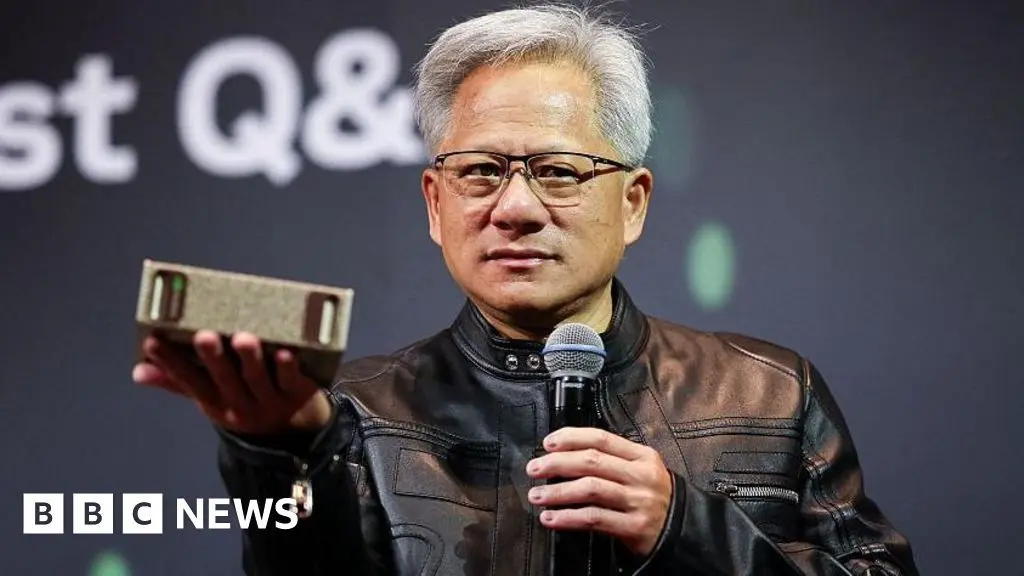China Forms AI Alliances to Boost Domestic Ecosystem Amid US Tech Restrictions
4 Sources
4 Sources
[1]
China forms AI alliances to cut U.S. tech reliance -- Huawei among companies seeking to create unified tech stack with domestic-powered standardization
China's artificial intelligence companies have launched two new strategic alliances aimed at developing AI technologies that rely on domestic standards, as well as integrating AI into industrial applications, at the World Artificial Intelligence Conference in Shanghai, according to Reuters. The moves are designed to develop domestic AI standards and reduce reliance on American technologies as soon as possible. The first coalition is called the Model-Chip Ecosystem Innovation Alliance, which unites leading makers of AI hardware -- such as Biren Technologies, Huawei, Enflame, and Moore Threads, among others -- and developers of large language models, including StepFun. The goal of the alliance is to form a groundbreaking ecosystem that links the entire technology stack from hardware and AI models to supporting infrastructure. One of the focuses of the coalition is to streamline and localize the development of AI hardware and software amid a limited supply of foreign hardware, such as high-performance Nvidia GPUs. For now, it is too early to make guesses about what the Model-Chip Ecosystem Innovation Alliance can do and what it is capable of achieving. However, to have a chance of success, members of the group will have to seek standardization and interoperability. That said, expect the union to establish common protocols, interfaces, and frameworks between models, chips, and infrastructure to streamline development and reduce fragmentation within China's AI ecosystem. Chinese AI hardware companies use different architectures (Arm, PowerVR, custom instruction set architectures), which complicates low-level unification, so do not expect Huawei's CANN to support processors not developed by Huawei. However, developers can agree on standardized APIs and model formats, allowing LLMs trained by StepFun, or its competitors, to run across multiple backends with minimal friction. Also, companies can unify mid-level software stacks to enable model portability and compatibility across all local platforms. Developers will write models once (e.g., in PyTorch) and run them on any Chinese-made accelerator without major changes. In addition, this will promote a cohesive national AI ecosystem where all components -- processors, compilers, frameworks, and tools -- work together. In a unified environment, innovation can develop faster, and China's AI industry becomes more resilient and competitive on the global stage, which is when it will be able to compete against the American AI industry. The second initiative, known as the Shanghai General Chamber of Commerce AI Committee, aims to help integrate AI more deeply into industrial applications. This alliance unites such hardware and software companies as Iluvatar CoreX, MetaX, MiniMax, and SenseTime, just to name a few. Essentially, the alliance will function as a bridge between AI developers and industrial players, ensuring that cutting-edge models and systems actively power China's industrial transformation. Both alliances are meant not only to create a self-sufficient AI ecosystem in China, but also to streamline its development as well as the adoption of AI by the industry.
[2]
Chinese AI firms form alliances to build domestic ecosystem amid US curbs
SHANGHAI, July 28 (Reuters) - China's artificial intelligence companies have announced two new industry alliances, aiming to develop a domestic ecosystem to reduce dependence on foreign tech as they seek to cope with U.S. export restrictions on advanced Nvidia (NVDA.O), opens new tab chipsets. The announcements were timed to coincide with the three-day World Artificial Intelligence Conference in Shanghai ending on Monday. The conference also showcased a slew of new products, such as an AI computing system from Huawei (HWT.UL) that experts believe rivals Nvidia's most advanced offering, as well as consumer-friendly products such as several kinds of digital AI glasses. The "Model-Chip Ecosystem Innovation Alliance" brings together Chinese developers of large language models (LLMs) and AI chip manufacturers. "This is an innovative ecosystem that connects the complete technology chain from chips to models to infrastructure," said Zhao Lidong, CEO of Enflame, one of the participating chipmakers. Other manufacturers of graphics processing units (GPUs) in the alliance include Huawei, Biren, and Moore Threads, which have been hit by U.S. sanctions that block them from purchasing advanced tech made with U.S. know-how. The alliance was announced by StepFun, an LLM developer. A second alliance, the Shanghai General Chamber of Commerce AI Committee, aims to "promote the deep integration of AI technology and industrial transformation." Participants include SenseTime (0020.HK), opens new tab, also sanctioned by the U.S. and which has pivoted from facial recognition technology to LLMs. Others are StepFun and another LLM developer, MiniMax, as well as chipmakers Metax and Iluvatar CoreX. One of the most talked about products at the conference was Huawei's CloudMatrix 384 which incorporates 384 of its latest 910C chips and outperforms Nvidia's GB200 NVL72 on some metrics, according to U.S. research firm SemiAnalysis. Huawei's system design capabilities have meant that it has been able to use more chips and system-level innovations to compensate for weaker individual chip performance, SemiAnalysis said. At least six other Chinese computing firms showcased similar "clustering" chip technology. Metax demonstrated an AI supernode featuring 128 C550 chips designed to support large-scale liquid-cooled data centre requirements. Other events included Tencent's (0700.HK), opens new tab unveiling of its open-source Hunyuan3D World Model 1.0, which the company said enables users to generate interactive 3D environments through text or image prompts. Baidu (9888.HK), opens new tab announced what it said was next-generation "digital human" technology that helps businesses to create virtual livestreamers. It features "cloning technology" that can replicate a human's voice, tone, and body language from just 10 minutes of sample footage. Alibaba (9988.HK), opens new tab was among those announcing AI glasses. Its Quark AI Glasses are powered by its Qwen AI model and are due to be released in China by the end of 2025. They will allow users to access the tech giant's map service for easy navigating and to use Alipay by scanning QR codes with voice commands. Reporting by Liam Mo and Brenda Goh; Editing by Edwina Gibbs Our Standards: The Thomson Reuters Trust Principles., opens new tab
[3]
Chinese AI firms form alliances to build domestic ecosystem amid U.S. curbs
China's artificial intelligence companies have announced two new industry alliances with the aim of developing a domestic ecosystem. China's artificial intelligence companies have announced two new industry alliances, aiming to develop a domestic ecosystem to reduce dependence on foreign tech as they seek to cope with U.S. export restrictions on advanced Nvidia chipsets. The announcements were timed to coincide with the three-day World Artificial Intelligence Conference in Shanghai ending on Monday. The conference also showcased a slew of new products, such as an AI computing system from Huawei that experts believe rivals Nvidia's most advanced offering, as well as consumer-friendly products such as several kinds of digital AI glasses. The "Model-Chip Ecosystem Innovation Alliance" brings together Chinese developers of large language models (LLMs) and AI chip manufacturers. "This is an innovative ecosystem that connects the complete technology chain from chips to models to infrastructure," said Zhao Lidong, CEO of Enflame, one of the participating chipmakers. Other manufacturers of graphics processing units (GPUs) in the alliance include Huawei, Biren, and Moore Threads, which have been hit by U.S. sanctions that block them from purchasing advanced tech made with U.S. know-how. The alliance was announced by StepFun, an LLM developer. A second alliance, the Shanghai General Chamber of Commerce AI Committee, aims to "promote the deep integration of AI technology and industrial transformation." Participants include SenseTime, also sanctioned by the U.S. and which has pivoted from facial recognition technology to LLMs. Others are StepFun and another LLM developer, MiniMax, as well as chipmakers Metax and Iluvatar CoreX. One of the most talked about products at the conference was Huawei's CloudMatrix 384 which incorporates 384 of its latest 910C chips and outperforms Nvidia's GB200 NVL72 on some metrics, according to U.S. research firm SemiAnalysis. Huawei's system design capabilities have meant that it has been able to use more chips and system-level innovations to compensate for weaker individual chip performance, SemiAnalysis said. At least six other Chinese computing firms showcased similar "clustering" chip technology. Metax demonstrated an AI supernode featuring 128 C550 chips designed to support large-scale liquid-cooled data centre requirements. Other events included Tencent's unveiling of its open-source Hunyuan3D World Model 1.0, which the company said enables users to generate interactive 3D environments through text or image prompts. Baidu announced what it said was next-generation "digital human" technology that helps businesses to create virtual livestreamers. It features "cloning technology" that can replicate a human's voice, tone, and body language from just 10 minutes of sample footage. Alibaba was among those announcing AI glasses. Its Quark AI Glasses are powered by its Qwen AI model and are due to be released in China by the end of 2025. They will allow users to access the tech giant's map service for easy navigating and to use Alipay by scanning QR codes with voice commands.
[4]
China's AI Industry Strengthens Domestic Push Amid US Chip Restrictions
China Launches AI Alliances and Unveils Huawei's 384-Chip System Amid US Curbs The China AI strategy is making its mark. Artificial Intelligence research in the country is rapidly evolving to reduce reliance on foreign technologies and boost domestic innovation. As geopolitical tensions over technology persist, China's artificial intelligence sector is taking decisive steps to reduce its reliance on foreign hardware, particularly advanced chips from US-based companies such as Nvidia. With growing global competition, China's AI strategy now focuses on smart infrastructure and edge computing. At the recent World Artificial Intelligence Conference (WAIC) in Shanghai, Chinese tech firms unveiled two major alliances aimed at strengthening the local AI ecosystem and addressing challenges caused by ongoing US export restrictions.
Share
Share
Copy Link
Chinese AI companies have formed two strategic alliances to develop a domestic AI ecosystem, reduce reliance on US technology, and integrate AI into industrial applications, showcasing new products at the World Artificial Intelligence Conference in Shanghai.
China's Strategic Move to Boost Domestic AI Ecosystem
In a significant development for China's artificial intelligence (AI) sector, two new industry alliances have been formed to strengthen the country's domestic AI ecosystem. These alliances, announced at the World Artificial Intelligence Conference in Shanghai, aim to reduce China's dependence on foreign technology, particularly in light of U.S. export restrictions on advanced Nvidia chipsets
1
2
3
.
Source: Reuters
Model-Chip Ecosystem Innovation Alliance
The first alliance, named the "Model-Chip Ecosystem Innovation Alliance," brings together Chinese developers of large language models (LLMs) and AI chip manufacturers. This coalition includes prominent companies such as Huawei, Biren Technologies, Enflame, and Moore Threads
1
2
.Zhao Lidong, CEO of Enflame, described the alliance as "an innovative ecosystem that connects the complete technology chain from chips to models to infrastructure"
2
. The alliance's primary goal is to create a unified tech stack with domestic-powered standardization, streamlining the development of AI hardware and software amid limited access to foreign hardware1
.Shanghai General Chamber of Commerce AI Committee
The second initiative, the Shanghai General Chamber of Commerce AI Committee, focuses on integrating AI more deeply into industrial applications. This alliance includes companies such as SenseTime, StepFun, MiniMax, Metax, and Iluvatar CoreX
1
2
. The committee aims to serve as a bridge between AI developers and industrial players, ensuring that cutting-edge models and systems actively power China's industrial transformation1
.Related Stories
Showcasing Domestic AI Innovations
The conference also provided a platform for Chinese companies to showcase their latest AI innovations:
- Huawei's CloudMatrix 384: This AI computing system, incorporating 384 of Huawei's latest 910C chips, reportedly outperforms Nvidia's GB200 NVL72 on some metrics
2
3
.

Source: Tom's Hardware
-
Clustering Chip Technology: At least six other Chinese computing firms demonstrated similar "clustering" chip technology, with Metax showcasing an AI supernode featuring 128 C550 chips
2
3
. -
Tencent's Hunyuan3D World Model 1.0: An open-source platform enabling users to generate interactive 3D environments through text or image prompts
2
3
. -
Baidu's Digital Human Technology: A next-generation system that helps businesses create virtual livestreamers, capable of replicating a human's voice, tone, and body language from just 10 minutes of sample footage
2
3
. -
Alibaba's Quark AI Glasses: Powered by Alibaba's Qwen AI model, these glasses are set to be released in China by the end of 2025, offering features such as easy navigation and Alipay integration
2
3
.
Implications for China's AI Industry

Source: Analytics Insight
These alliances and innovations represent a concerted effort by China to build a self-sufficient AI ecosystem. By focusing on domestic standards and reducing reliance on American technologies, China aims to streamline its AI development and adoption across industries
1
4
.However, challenges remain. Chinese AI hardware companies use different architectures, which complicates low-level unification. Despite this, the alliances are expected to work towards standardization and interoperability, establishing common protocols, interfaces, and frameworks to reduce fragmentation within China's AI ecosystem
1
.As geopolitical tensions over technology persist, China's strategic push in the AI sector signals its determination to compete on the global stage while fostering domestic innovation and reducing vulnerability to foreign restrictions
4
.References
Summarized by
Navi
[1]
[4]
Related Stories
Alibaba Develops AI Inference Chip Amid China's Push for Semiconductor Independence
28 Aug 2025•Technology

China's World AI Conference Showcases Innovation Amid US Sanctions
25 Jul 2025•Technology

China Proposes Global AI Cooperation Organization, Challenging US Dominance
26 Jul 2025•Policy and Regulation

Recent Highlights
1
Google launches Gemini 3 Flash as default AI model, delivering speed with Pro-grade reasoning
Technology

2
OpenAI launches GPT Image 1.5 as AI image generator war with Google intensifies
Technology

3
OpenAI launches ChatGPT app store, opening doors for third-party developers to build AI-powered apps
Technology





